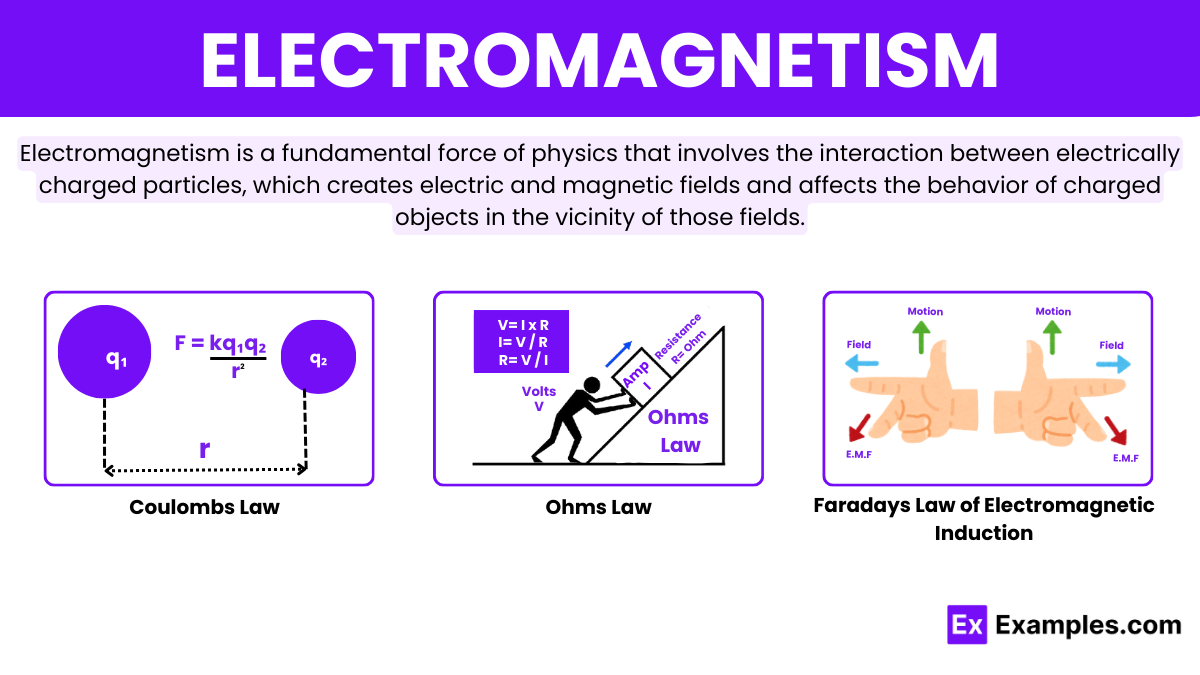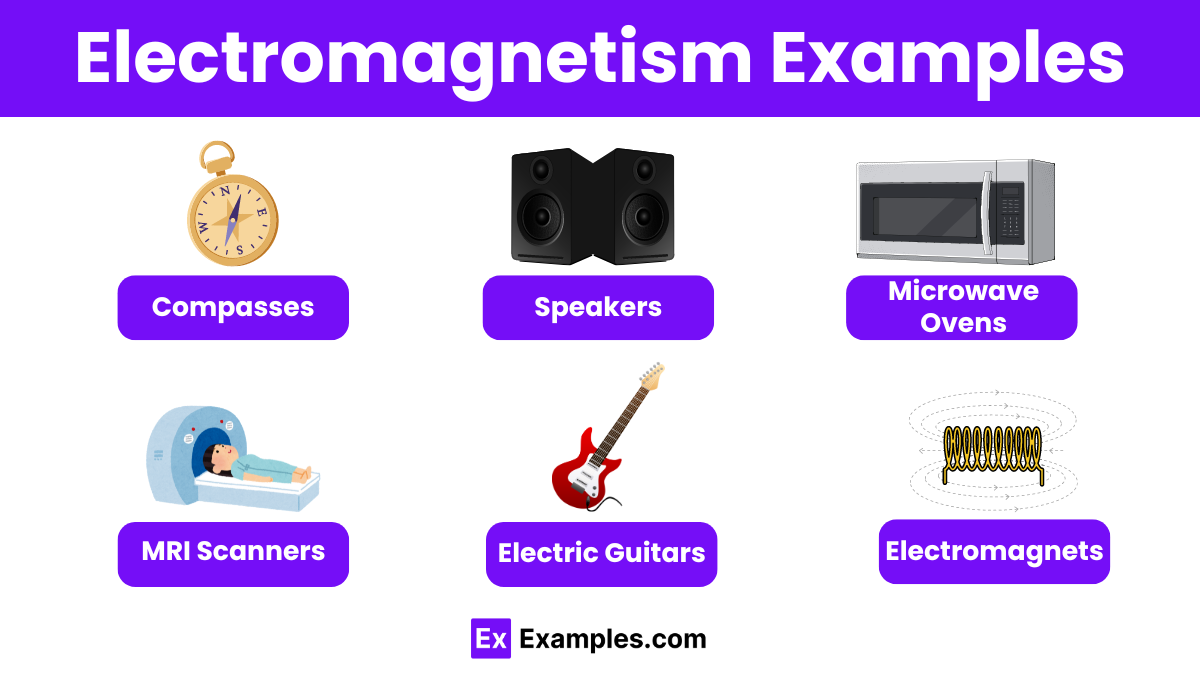What is the fundamental force responsible for electromagnetism?
Gravitational force
Electromagnetic force
Nuclear force
Weak force

Electromagnetism is a fascinating area of physics that explores how electric charges produce magnetic fields, and vice versa. This fundamental interaction is governed by the laws of physics and is crucial for understanding how everything from electric motors to MRI machines operates. At its core, electromagnetism connects the electricity that powers our gadgets with the magnetic forces that keep our compass needles pointing north. By exploring these interactions, we gain insights into the forces that shape our world at both the microscopic and cosmic scales.
The journey of understanding electromagnetism began in the early 19th century with Danish physicist Hans Christian Ørsted. In 1820, Ørsted discovered that a magnetic compass needle moved when placed near a wire carrying electric current, revealing the connection between electricity and magnetism. This groundbreaking observation led to further explorations by other scientists. Notably, André-Marie Ampère quickly developed a mathematical theory linking electricity and magnetism after learning about Ørsted’s experiment.
The most significant advancement came from James Clerk Maxwell, a Scottish physicist who, in the 1860s, formulated the famous Maxwell’s Equations. These equations describe how electric and magnetic fields are generated and altered by each other and by charges and currents. Maxwell’s work predicted the existence of electromagnetic waves, which travel through space at the speed of light. This prediction was experimentally confirmed by Heinrich Hertz in the late 1880s, who demonstrated the reality of radio waves, thus setting the stage for countless innovations in communication and technology based on electromagnetic principles.
Maxwell’s Equations are four partial differential equations that form the foundation of classical electrodynamics, optics, and electric circuits. They describe how electric and magnetic fields are generated by charges, currents, and changes of each other.
Coulomb’s Law states that the force between two point charges is directly proportional to the product of the charges and inversely proportional to the square of the distance between them. This force is attractive for opposite charges and repulsive for like charges.
Ohm’s Law states that the current flowing through a conductor between two points is directly proportional to the voltage across the two points and inversely proportional to the resistance between them. Simply, 𝑉=𝐼𝑅V=IR, where 𝑉V is voltage, 𝐼I is current, and 𝑅R is resistance.
Faraday’s Law indicates that a change in magnetic flux through a loop induces an electromotive force (EMF) in the loop. This principle is the basis for electrical generators, transformers, and many types of electrical motors.
Lenz’s Law is a statement of the conservation of energy in electromagnetic induction, stating that the direction of an induced EMF will always oppose the change in magnetic flux that produced it, thereby conserving energy.
Kirchhoff’s Circuit Laws comprise two rules: The Current Law, which states that the total current entering a junction equals the total current leaving the junction, and The Voltage Law, which says that the sum of all the voltages around any closed loop in a circuit must equal zero.
Gauss’s Law relates the distribution of electric charge to the resulting electric field. It states that the electric flux out of a closed surface is proportional to the charge enclosed by the surface.
The Lorentz Force Law describes the force on a charged particle moving in magnetic and electric fields. The total force on the particle is equal to the sum of the electric force (charge times electric field) and the magnetic force (charge times velocity cross the magnetic field).
Understanding these laws is essential for studying and applying the principles of electromagnetism across various scientific and engineering fields.

Electromagnetism manifests as electric fields, magnetic fields, and electromagnetic waves, each integral to various technologies and natural phenomena.
In daily life, electromagnetism powers devices, enables digital storage, and facilitates wireless communications through electromagnetic waves.
The strongest artificial electromagnets are used in scientific equipment like MRI machines and particle accelerators, generating immensely powerful magnetic fields.
Electromagnetism is incredibly powerful, governing everything from atomic interactions in materials to the behavior of galaxies in the universe.
Text prompt
Add Tone
10 Examples of Public speaking
20 Examples of Gas lighting
What is the fundamental force responsible for electromagnetism?
Gravitational force
Electromagnetic force
Nuclear force
Weak force
Who is credited with the formulation of the laws of electromagnetism?
Isaac Newton
Albert Einstein
James Clerk Maxwell
Niels Bohr
Which law relates the electric field and magnetic field in a moving charge?
Faraday's Law
Ohm's Law
Ampere's Law
Lorentz Force Law
What is the unit of electric charge in the International System of Units (SI)?
Volt
Ampere
Coulomb
Farad
What does Faraday's Law of Induction state about a changing magnetic field?
It generates an electric field
It remains constant
It produces a gravitational field
It induces a nuclear force
Which equation represents the relationship between electric current, magnetic field, and force?
F = qE
F = qvB
F = qvB sinθ
F = mv²/r
How does the magnetic field (B) around a long, straight current-carrying conductor vary with distance (r) from the conductor?
Directly proportional
Inversely proportional
Inversely proportional to the square of the distance
Independent of distance
What is the direction of the magnetic field around a current-carrying wire determined by?
Right-hand rule
Left-hand rule
Newton's third law
Coulomb's law
What is the primary principle behind the operation of electric generators?
Ohm's Law
Faraday's Law of Induction
Ampere's Law
Coulomb's Law
Which device is used to measure the strength of a magnetic field?
Ammeter
Voltmeter
Galvanometer
Magnetometer
Before you leave, take our quick quiz to enhance your learning!

